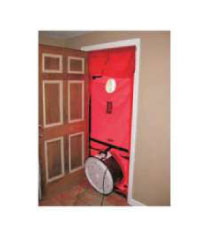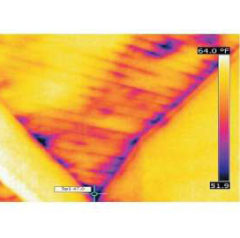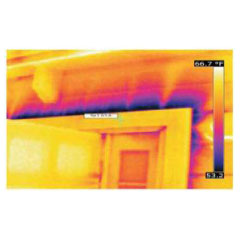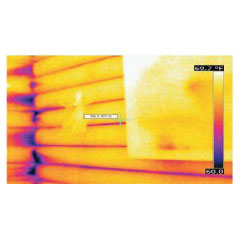
Let’s just look at the potential savings in energy costs. One gauge of energy efficiency is to compare your total yearly cost of gas and electricity divided by your home’s square footage of living area. An energy efficient home will operate on about $0.60 per square foot a year. Energy inefficient homes may cost two or three times that amount. You can figure out for yourself how much that equates in energy cost savings per year for your own home.
What does an energy audit do? As previously stated, an energy audit is the first step in the process. Simply put, an energy audit finds the source of any air leaks and determines how bad those air leaks are. The next step is to eliminate the air leaks by replacing faulty weather stripping, door sweeps, etc., and by using an appropriate sealant like Energy Seal® or Woodsman™. Since that subject is covered in “How to Apply Energy Seal™ and Woodsman” for now we’ll just concentrate on the energy audit.
The three basic tools used for an energy audit are a blower door, a thermal imaging camera and a computer loaded with the appropriate software. The blower door in conjunction with the computer measures the cumulative air leakage within the home and provides a negative internal air pressure, so the thermal imaging camera can better locate air leaks. The thermal imaging camera takes actual pictures of the air leaks, so you’ll have a record of exactly where they are located.
There are many utility companies around the nation that offer free energy evaluations and incentives for increasing the energy efficiency of your home. It’s always worth checking with your local energy provider to see what programs are available in your area.
There are a whole host of web sites devoted to providing information about Energy Audits and what they can do to identify problem situations and reduce your energy costs. Probably the best place to start is www.energystar.gov. Besides offering some do-it-yourself advice, you can also find a list of certified professional energy auditors located in your area.
Remember that the Energy Audit is just the first step. Next you have to decide if you want to attempt to correct the problems yourself or use a professional contractor. For log home owners here’s where things can get a bit tricky. Most painters and contractors are familiar with sealing and caulking conventional homes but as you probably already know, logs homes are different and it takes someone with log structure experience and expertise to do the job correctly. Plus general purpose caulks and sealants found at local hardware stores and DIY outlets just don’t offer the performance that’s required for the unique parameters associated with log homes. If you need help finding someone in your area who has experience doing this type of work, give us a call and we’ll try to provide you with some referrals.
So let’s assume you have had an energy audit and corrected all of the air leaks into to your home. In addition to significantly reduced utility bills, what other benefits will you see?
Comfort - Your home will be less drafty and it will be much easier to maintain a constant temperature throughout your entire home.
Water Leaks – In addition to eliminating air infiltration into your home, you will also eliminate water leaks that can discolor or rot your logs and trim.
Less Dust – Since eliminating air leaks stops a continuous flow of outside air coming into your home, it also reduces the amount of dust that accumulates within your home.
Fewer Bugs - Sealing air leaks closes openings used by ladybugs, ants and other insects to enter the living area of your home. Sealing these openings is much more effective and a lot safer than the use of any broadcast pesticides.
The bottom line is that an energy audit is well worth the price and the energy savings alone will typically cover the cost of the audit plus the cost of repairs within the first two years.


